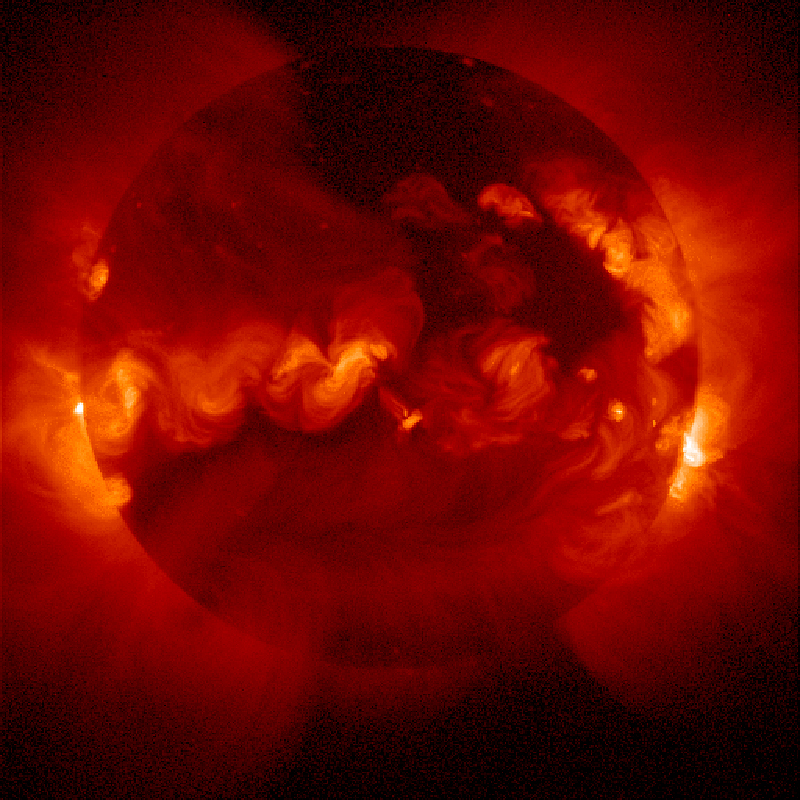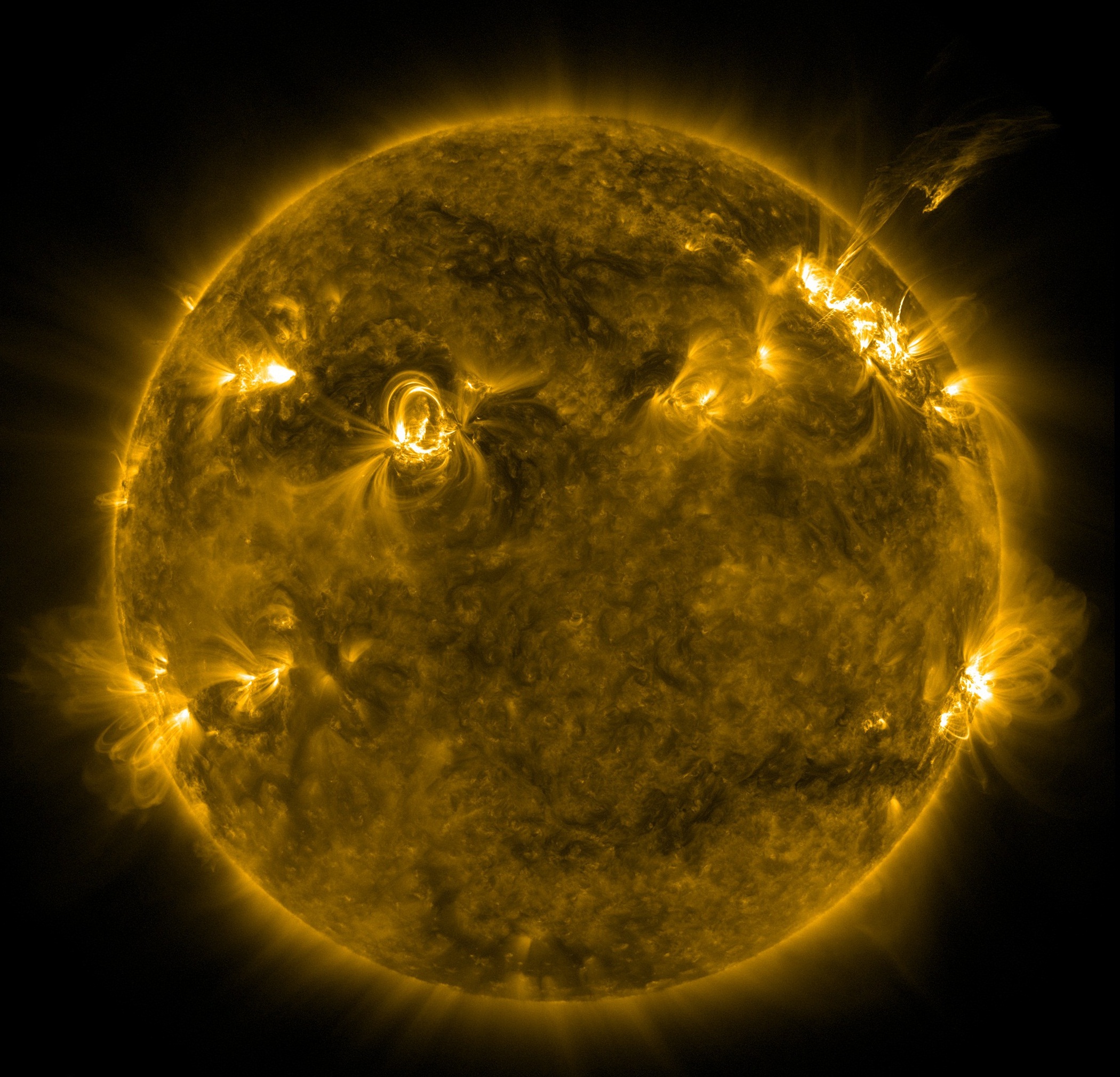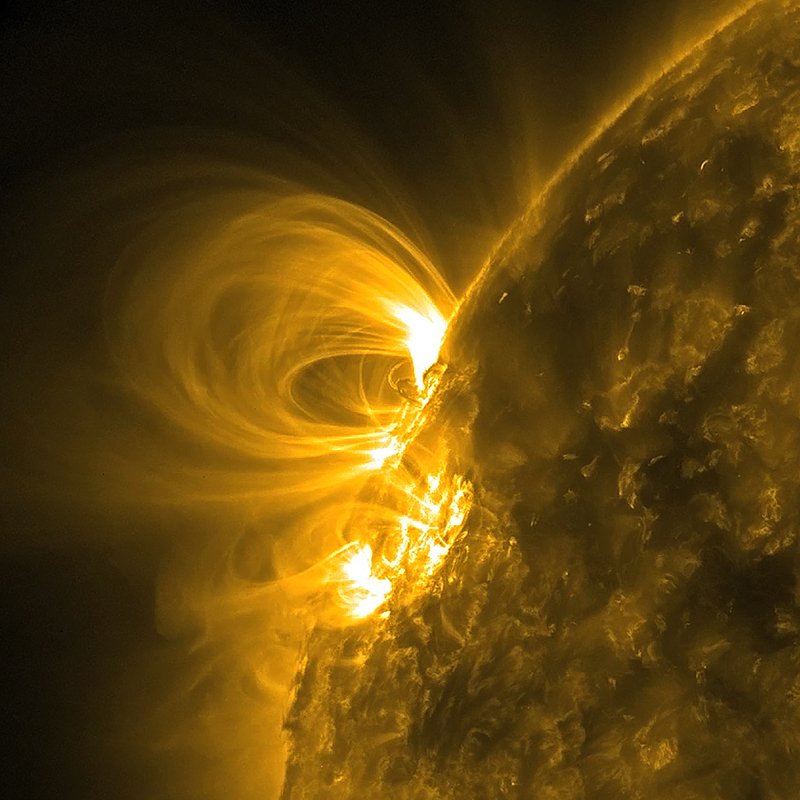Solar flare is a powerful eruption on the surface of the sun . During a solar flare, tremendous amounts of energy and matter are released explosively. The energy reaches Earth in about 8 minutes. The erupted matter may take hours or days to reach Earth. If powerful enough, a solar flare can disrupt or damage electronics aboard satellites circling Earth. However, solar flares are generally not powerful enough to penetrate Earth’s atmosphere . Solar flares result from rapid changes in the sun’s magnetism .

Like Earth and several of the other planets , the sun acts as a giant magnet. Like all magnets, the sun has a magnetic field, an area of magnetic influence surrounding it. A magnetic field can be visualized as a set of magnetic field lines that connect the two poles of the magnet. In a common magnet, the lines do not move on their own. However, the constant churning of the sun’s interior and surface can twist and tangle the magnetic field lines circling the star. The magnetic loops can then snap back to a more relaxed position, releasing the energy stored in such tangles. This release of energy can produce a solar flare.

The magnetic field at the solar surface and the frequency of solar flares vary with the solar activity cycle. The solar activity cycle lasts 11 years on average and is marked by changes in the number of sunspots . A sunspot is a relatively cool, dark spot on the sun’s surface. Flares tend to occur more commonly as the number of sunspots begins to decline.
A solar flare often happens at the same time as—but does not usually cause—a coronal mass ejection (CME). During a CME, a massive amount of the sun’s surface matter is hurled into space. Like solar flares, CME’s are caused by rapid changes in the sun’s magnetic field. CME’s are often much more dangerous to Earth than are flares, having the power to damage electrical systems on Earth’s surface. Such systems range from the smallest electronic devices all the way up to entire electric power grids.

The study of solar flares began with the independent observation of a flare in visible light by the English astronomers Richard Carrington and Richard Hodgson in 1859. Magnetic field measurements on Earth peaked shortly after the flare, and displays of aurora borealis (the northern lights) and aurora australis (the southern lights) were seen much farther from the North and South poles than is common. These factors helped scientists to link flares and solar magnetic fields. Such visible flares, sometimes called “white-light” flares, are extremely rare. Solar scientists mainly study flares in the infrared , radio , ultraviolet , and X-ray bands. Scientists conducted early studies of solar activity using ground-based telescopes . Later, satellite technology enabled the construction of space telescopes and observatories , greatly increasing the ways the sun can be studied.
Solar flares can have major effects on satellites. They can distort information from Global Positioning System (GPS) spacecraft and damage expensive communications satellites . For this reason, scientists are working to understand and predict solar flares.
